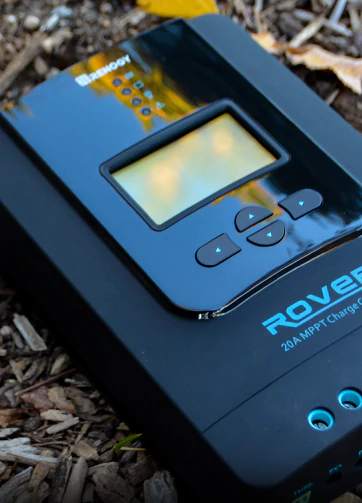Should I purchase a MPPT charge controller for my solar installation?
What to know about this charge controller option
Charge controllers are essential components of any solar installation. If you’re looking to create the most efficient and advanced solar installation, Maximum Power Point Tracking (MPPT) charge controllers are a great technology to invest in. Charge controllers have advanced greatly over the past decade, including MPPT charge controllers. MPPT charge controllers keep your solar installation running safely and efficiently and ensure your batteries are supplied with a steady and optimum level of power.
What is an MPPT charge controller?
Charge controllers perform the important function of controlling the output from your solar panels to your batteries to ensure your battery bank doesn’t get overcharged and subsequently damaged.
Maximum Power Point Tracking (MPPT) charge controllers are some of the most popular controllers available and are highly efficient at using the full power of your solar panels to charge your batteries. They convert the higher voltage DC output from solar panels down to the lower voltage needed to charge batteries. Essentially, they actively monitor and adjust their input to regulate your solar system’s current. The overall output will increase as a result, and you can expect efficiency ratings of 90% or higher.
What are the differences between MPPT and PWM charge controllers?
The other main charge controllers available in the market are PWM charge controllers. PWM controllers are suitable for smaller systems or where efficiency isn’t as important. The main difference between the two is that PWM controllers are much simpler in design and draw the current from the solar panels at just above the voltage of the battery.
An MPPT controller draws the current from the panel at the maximum power voltage. You can think of an MPPT controller as a“smart DC-DC converter.” A MPPT charge controller will monitor the maximum power point of the panel, which varies throughout the day due to sun angle and intensity, shading, and panel health. Like a regular DC-DC converter, the current is increased in the same ratio as the voltage is dropped.
What are the pros and cons of MPPT solar charge controllers?
Pros:
- Perform best if you’re in cold, cloudy environments
- Perform best when the battery is in a low state of charge
- Actively monitor conditions, leading to high efficiency levels
- Suitable for larger systems where the additional energy production is valuable
- Ideal in situations where the solar array voltage is higher than the battery voltage
Cons:
- More expensive than PWM controllers. MPPT charge controllers cost between £60 and £240. 20 amp PWM charge controllers can cost as little as £35.
- Tend to have a shorter lifespan due to more components present in the technology.
What are the limitations of MPPT charge controllers?
Because MPPT controllers limit their output, you can build an array as large as you want and a controller will limit that output. However, this means your system isn’t as efficient as it could be since you have panels that aren’t being properly utilized. All MPPT controllers have an amp reading, for example a 20 amp MPPT Controller. Even if your panels have the potential to produce 60A of current, a 20 amp MPPT charge controller will only produce 20A of current, no matter what.
How should I wire my panels with an MPPT charge controller?
Your solar panels can be wired either in series or parallel or combination of series/parallel using MPPT charge controller. This makes MPPT charge controllers a highly versatile component.
Where should I mount my charge controller?
Excess voltage will be converted into heat and dissipated into air. Therefore, it’s crucial that you keep your charge controller mounted in a well-ventilated space with at least 9 inches of clearance around the charge controller.
Do I need a charge controller in every solar application?
You don’t need a charge controller with small 1 to 5 watt panels. If a panel puts out 2 watts or less for each 50 battery amp hours, you probably don’t need a charge controller. You will typically need a charge controller in most applications.

How do I know what size charge controller to buy?
An improperly selected charge controller can result in up to a 50% loss of the solar generated power. If your solar system's volts are 12 and your amps are 14, you would need to install a solar charge controller that is at least 14 amps. However due to factors such as light reflection, sporadic increased current levels can occur, you need to factor in an additional 25%, bringing the minimum amps that your solar charger controller must have to 17.5 amps. We’ll round up in this case. In the end, you would need to purchase a 12 volt, 20 amp solar charge controller to meet the needs of your solar installation.
How do I know what size system I need?
To determine what size system will best fit your needs, make a list of all the appliances and devices you plan on running. We recommend using the Renogy solar panel calculator to properly design a solar installation that will meet your energy needs. You’ll need to know what total watts your electronics will consume, how long you plan on running devices, your charge controller efficiency, and average sun hours per day.
Conclusion
MPPT charge controllers are by far the “smartest” and most efficient charge controllers available on the market today. Due to their ability to actively monitor and adjust their input to regulate your solar system’s current, you can expect higher efficient rates without compromising safety. If you’re looking to maximize your efficiency with some of the most advanced technology available, MPPT charge controllers are the way to go.







